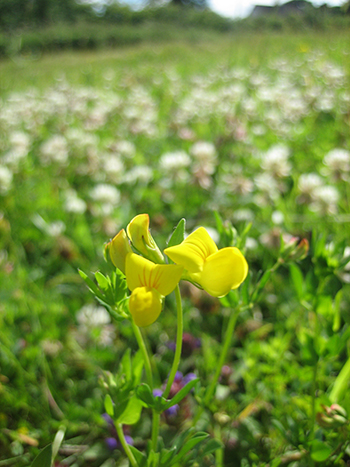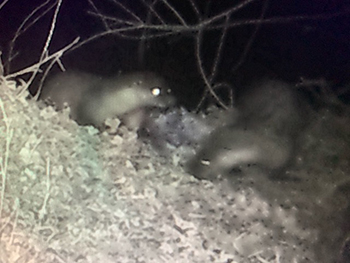
Plenty of flowers but few insects?
I was chatting to Colin Carpenter recently. It was late in the day and the weather was mild. We were in a chatting mood. Colin runs the Community Tree Trust from a nursery in Maulden and it seems we share a fascination for the natural world as well as a lifelong obsession with trees. We have both made a kind of living from this interest and whilst my knowledge remains broad and thin, Colin has become something of an expert on, amongst many other things, Bedfordshire’s wildlife.
For reasons I forget, I found myself enthusing about the large numbers of flowers that now brighten the fields on the Gravenhurst side of the River Hitt each spring. All that nectar and pollen should attract insects in droves, but we suspect numbers of two of our more obvious six-leggers – butterflies and bumble bees – don’t seem to live up to expectation. Colin’s response was shocking. Did I realise, he asked, that nine species of bumble bee have become extinct in Bedfordshire since the 1940s. This nugget was one he had come across recently whilst reading the field notebooks of Vic Chambers, a past recorder of Bedfordshire’s insects, who was active in the mid-twentieth century. This is where Colin’s knowledge of current bumble bees in the county came into play. He had quickly realised that there are far fewer species to be found here now than those that Vic observed seventy years ago. Nine species fewer! That’s a lot. Colin was clearly rattled
The causes of this dramatic decline are no doubt complex, but it seems that use of pesticides on farms, particularly in the 1960s and 70s is part of the mix, along with destruction of habitats, removal of food plants and suitable nesting and overwintering sites. Perhaps disease and climate change are playing their part too. It’s reasonable to assume that if such relatively large and easy to spot beasties have disappeared then many others, smaller and less glamorous, must have gone the same way. The effects on the whole ecosystem and indeed on us is mighty difficult to call.

A pair of otters caught by a camera trap (picture credit Warren Price)
Rather splendidly, the day after my conversation with Colin, Jane had an afternoon of wildlife marvels. First there are definite signs of regular badger visits (as cattle farmers we find ourselves in a tricky position badger-wise but are generally very much pro). Second, she had a close encounter with a barn owl close to the river. And finally, and very excitingly, she came across what she was pretty sure was otter spraint (otter poo – no idea why it’s favoured with its own name) on a piece of wood by the river. Its presence is often the only way to be sure otters have visited. We are grateful to Warren Price (ace wildlife photographer who happens to live in the village – see https://www.instagram.com/wossa_price/) for setting up a camera trap which has revealed that a pair of otters have at least visited the parish. We may be down nine species of bumble bee but if otters can make a return and barn owls can be almost a common sight, there must be some cause for optimism.
Finally, here’s something for the future. There is evidence that when otters return to a river, water voles follow. This seems to be a result of otters driving out American mink, an animal that preys on water voles, amongst many other things. It’s very unlikely you’ll see an otter even where they are resident, but if water voles move in, someone will notice. I’ve never seen them here, but if you do or if you see signs of them, do let the Beds Natural History Society know.
